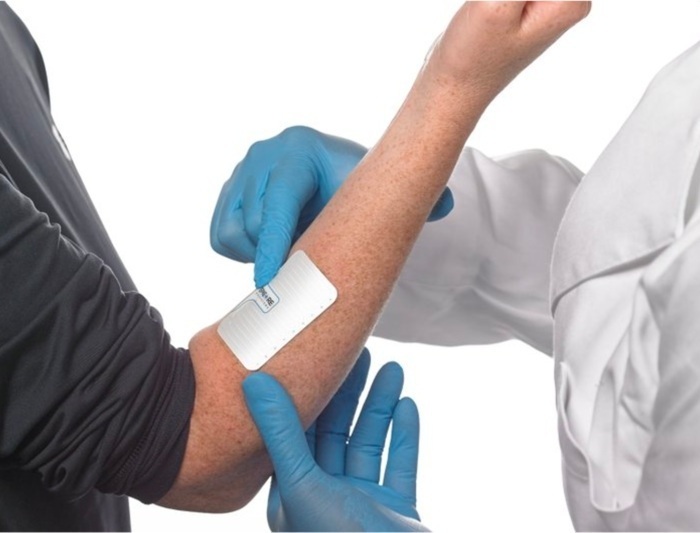Hematological Ratios Associated with Mortality in Pediatric Trauma Patients
|
By LabMedica International staff writers Posted on 14 Nov 2019 |
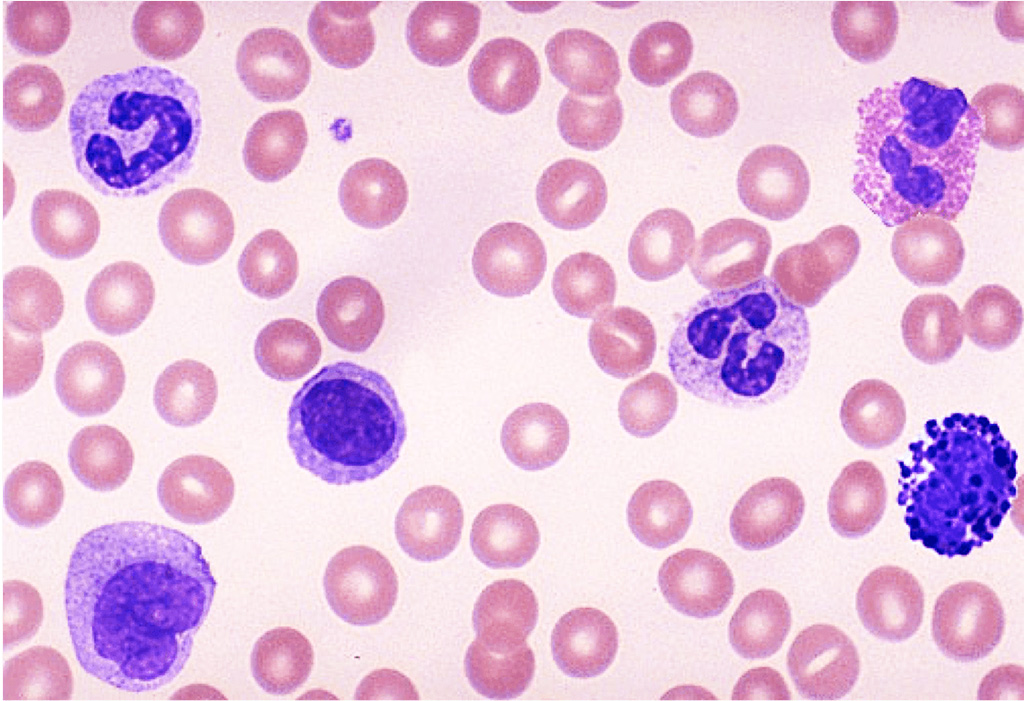
Image: A blood film showing neutrophils and lymphocytes and other white and red blood cells, and a platelet (Photo courtesy of University of Minnesota).
Trauma-related injury as a potential cause of death affects millions of people worldwide, especially in less developed countries and furthermore, it is the leading cause of mortality in pediatric trauma patients.
The hematological parameters, the neutrophil-to-lymphocyte ratio (NLR) and the platelet-to-lymphocyte ratio (PLR) (as a new marker of inflammatory status), have been investigated to examine the prediction ability of systemic inflammatory response in many other disorders, including malignant cancers and pulmonary diseases.
An emergency physician at the Sivas Cumhuriyet University Hospital (Sivas, Turkey) evaluated the prognostic ability of NLR and PLR on mortality in pediatric trauma (PT) patients. This retrospective study included a total of 358 PT patients admitted to the emergency department (ED) of the hospital, between January 2010 and June 2018, due to acute trauma.
Data for hemoglobin (Hb), neutrophil, monocyte, white blood cell (WBC), lymphocyte, blood glucose, alanine aminotransferase (ALT), aspartate aminotransferase (AST), activated partial thromboplastin time (aPTT), and international normalized ratio (INR) were retrospectively derived from the medical record database of the first electronic application of biochemical results. Both the NLR and PLR were calculated at the time of admission by dividing the blood neutrophil count and the blood platelet count, respectively, by the lymphocyte count. The data regarding absolute neutrophil count and absolute lymphocyte count were obtained from the first routine blood assay at the time of admission.
The scientists reported that the NLR and PLR values were significantly higher in survivors than in non-survivors (NLR, 6.2±5.7 versus 2.6±2.5; PLR, 145.3±85.0 versus 46.2±25.2. The NLR (odds ratio [OR], 3.21 ;) PLR (OR, 0.90) blood glucose (OR, 1.02), and Injury Severity Score (ISS) (OR, 1.28)) were independent predictors of the mortality risk in PT patients. The area under the curve in the ROC curve analysis was 0.764 with a cut-off of 2.77 (sensitivity 70%, specificity 77%) for the NLR; and 0.928 with a cut-off of 61.83 (sensitivity 90%, specificity 85%) for the PLR.
The author concluded that acquiring the NLR and PLR at the time of admission could be a useful predictor for mortality in PT patients. The study indicated that NLR and PLR, as well as blood glucose and ISS at the time of admission, were independently associated with post-traumatic systemic inflammatory response syndrome (SIRS). The study was published in the October 2019 issue of the Rambam Maimonides Medical Journal.
Related Links:
Sivas Cumhuriyet University Hospital
The hematological parameters, the neutrophil-to-lymphocyte ratio (NLR) and the platelet-to-lymphocyte ratio (PLR) (as a new marker of inflammatory status), have been investigated to examine the prediction ability of systemic inflammatory response in many other disorders, including malignant cancers and pulmonary diseases.
An emergency physician at the Sivas Cumhuriyet University Hospital (Sivas, Turkey) evaluated the prognostic ability of NLR and PLR on mortality in pediatric trauma (PT) patients. This retrospective study included a total of 358 PT patients admitted to the emergency department (ED) of the hospital, between January 2010 and June 2018, due to acute trauma.
Data for hemoglobin (Hb), neutrophil, monocyte, white blood cell (WBC), lymphocyte, blood glucose, alanine aminotransferase (ALT), aspartate aminotransferase (AST), activated partial thromboplastin time (aPTT), and international normalized ratio (INR) were retrospectively derived from the medical record database of the first electronic application of biochemical results. Both the NLR and PLR were calculated at the time of admission by dividing the blood neutrophil count and the blood platelet count, respectively, by the lymphocyte count. The data regarding absolute neutrophil count and absolute lymphocyte count were obtained from the first routine blood assay at the time of admission.
The scientists reported that the NLR and PLR values were significantly higher in survivors than in non-survivors (NLR, 6.2±5.7 versus 2.6±2.5; PLR, 145.3±85.0 versus 46.2±25.2. The NLR (odds ratio [OR], 3.21 ;) PLR (OR, 0.90) blood glucose (OR, 1.02), and Injury Severity Score (ISS) (OR, 1.28)) were independent predictors of the mortality risk in PT patients. The area under the curve in the ROC curve analysis was 0.764 with a cut-off of 2.77 (sensitivity 70%, specificity 77%) for the NLR; and 0.928 with a cut-off of 61.83 (sensitivity 90%, specificity 85%) for the PLR.
The author concluded that acquiring the NLR and PLR at the time of admission could be a useful predictor for mortality in PT patients. The study indicated that NLR and PLR, as well as blood glucose and ISS at the time of admission, were independently associated with post-traumatic systemic inflammatory response syndrome (SIRS). The study was published in the October 2019 issue of the Rambam Maimonides Medical Journal.
Related Links:
Sivas Cumhuriyet University Hospital
Latest Clinical Chem. News
- Gold Nanoparticles to Improve Accuracy of Ovarian Cancer Diagnosis
- Simultaneous Cell Isolation Technology Improves Cancer Diagnostic Accuracy
- Simple Non-Invasive Hair-Based Test Could Speed ALS Diagnosis
- Paper Strip Saliva Test Detects Elevated Uric Acid Levels Without Blood Draws
- Prostate Cancer Markers Based on Chemical Make-Up of Calcifications to Speed Up Detection
- Breath Test Could Help Detect Blood Cancers
- ML-Powered Gas Sensors to Detect Pathogens and AMR at POC
- Saliva-Based Cancer Detection Technology Eliminates Need for Complex Sample Preparation
- Skin Swabs Could Detect Parkinson’s Years Before Symptoms Appear
- New Clinical Chemistry Analyzer Designed to Meet Growing Demands of Modern Labs

- New Reference Measurement Procedure Standardizes Nucleic Acid Amplification Test Results
- Pen-Like Tool Quickly and Non-Invasively Detects Opioids from Skin
- Simple Urine Test Could Detect Multiple Cancers at Early Stage
- Earwax Test Accurately Detects Parkinson’s by Identifying Odor Molecules
- First-Of-Its-Kind Quantitative Method Assesses Opioid Exposure in Newborns
- Paper-Based Devices Outperform Existing Methods in Diagnosing Asymptomatic Malaria
Channels
Clinical Chemistry
view channel
Gold Nanoparticles to Improve Accuracy of Ovarian Cancer Diagnosis
Ovarian cancer is considered one of the deadliest cancers, in part because it rarely shows clear symptoms in its early stages, and diagnosis is often complex. Current approaches make it difficult to accurately... Read more
Simultaneous Cell Isolation Technology Improves Cancer Diagnostic Accuracy
Accurate cancer diagnosis remains a challenge, as liquid biopsy techniques often fail to capture the complexity of tumor biology. Traditional systems for isolating circulating tumor cells (CTCs) vary in... Read moreMolecular Diagnostics
view channel
2-Hour Cancer Blood Test to Transform Tumor Detection
Glioblastoma and other aggressive cancers remain difficult to control largely because tumors can recur after treatment. Current diagnostic methods, such as invasive biopsies or expensive liquid biopsies,... Read more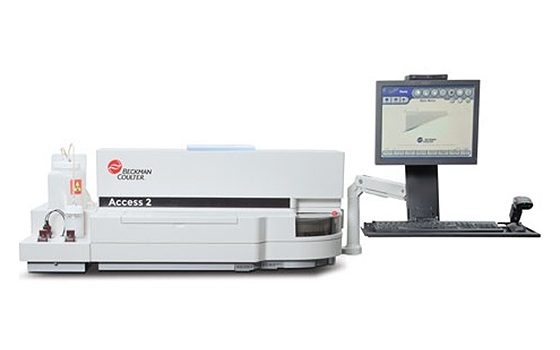
Automated High Throughput Immunoassay Test to Advance Neurodegenerative Clinical Research
Alzheimer’s disease and other neurodegenerative disorders remain difficult to diagnose and monitor accurately due to limitations in existing biomarkers. Traditional tau and phosphorylated tau measurements... Read more
Ultrasensitive Test Could Identify Earliest Molecular Signs of Metastatic Relapse in Breast Cancer Patients
HR+ (hormone receptor-positive) HER2- (human epidermal growth factor receptor 2-negative) breast cancer represents over 70% of all breast cancer cases and carries a significant risk of late recurrence.... Read moreImmunology
view channel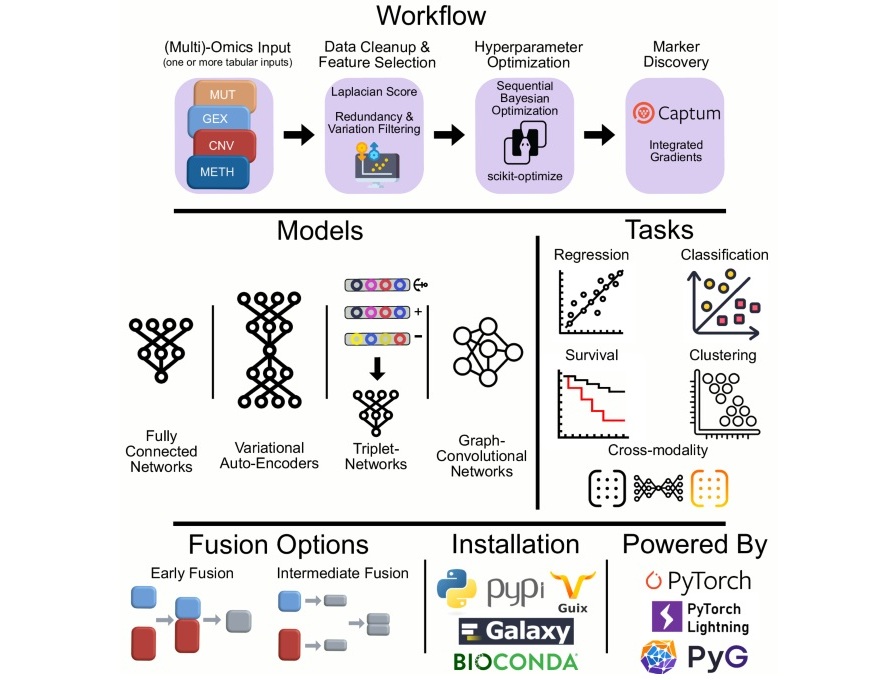
Novel Tool Uses Deep Learning for Precision Cancer Therapy
Nearly 50 new cancer therapies are approved each year, but selecting the right one for patients with highly individual tumor characteristics remains a major challenge. Physicians struggle to navigate the... Read more
Companion Diagnostic Test Identifies HER2-Ultralow Breast Cancer and Biliary Tract Cancer Patients
Breast cancer is the most common cancer in Europe, with more than 564,000 new cases and 145,000 deaths annually. Metastatic breast cancer is rising in younger populations and remains the leading cause... Read moreMicrobiology
view channel
Microfluidic Platform Assesses Neutrophil Function in Sepsis Patients
Sepsis arises from infection and immune dysregulation, with neutrophils playing a central role in its progression. However, current clinical tools are unable to both isolate these cells and assess their... Read moreNew Diagnostic Method Confirms Sepsis Infections Earlier
Sepsis remains one of the most dangerous medical emergencies, often progressing rapidly and becoming fatal without timely intervention. Each hour of delayed treatment in septic shock reduces patient survival... Read more
New Markers Could Predict Risk of Severe Chlamydia Infection
Chlamydia trachomatis is a common sexually transmitted infection that can cause pelvic inflammatory disease, infertility, and other reproductive complications when it spreads to the upper genital tract.... Read more
Portable Spectroscopy Rapidly and Noninvasively Detects Bacterial Species in Vaginal Fluid
Vaginal health depends on maintaining a balanced microbiome, particularly certain Lactobacillus species. Disruption of this balance, known as dysbiosis, can increase risks of infection, pregnancy complications,... Read morePathology
view channelAccurate Pathological Analysis Improves Treatment Outcomes for Adult Fibrosarcoma
Adult fibrosarcoma is a rare and highly aggressive malignancy that develops in connective tissue and often affects the limbs, trunk, or head and neck region. Diagnosis is complex because tumors can mimic... Read more
Clinicopathologic Study Supports Exclusion of Cervical Serous Carcinoma from WHO Classification
High-grade serous carcinoma is a rare diagnosis in cervical biopsies and can be difficult to distinguish from other tumor types. Cervical serous carcinoma is no longer recognized as a primary cervical... Read moreTechnology
view channel
Coral-Inspired Capsule Samples Hidden Bacteria from Small Intestine
The gut microbiome has been linked to conditions ranging from immune disorders to mental health, yet conventional stool tests often fail to capture bacterial populations in the small intestine.... Read more
Rapid Diagnostic Technology Utilizes Breath Samples to Detect Lower Respiratory Tract Infections
Respiratory tract infections (LRTIs) are leading causes of illness and death worldwide, particularly among vulnerable populations such as the elderly, young children, and those with compromised immune systems.... Read moreIndustry
view channel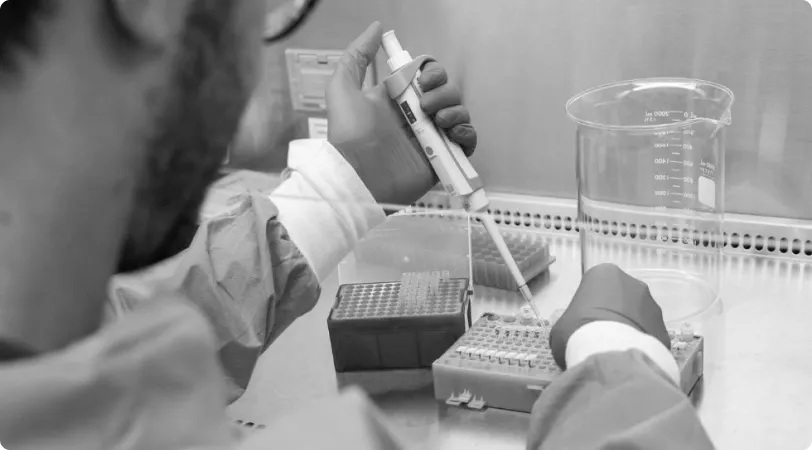
VedaBio Partners With Mammoth Biosciences to Expand CRISPR-Based Diagnostic Technologies
VedaBio (San Diego, CA, USA) has entered into a non-exclusive license agreement with Mammoth Biosciences (Brisbane, CA, USA) for the use of select CRISPR-based technologies in diagnostic applications.... Read more



















